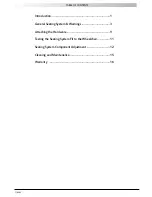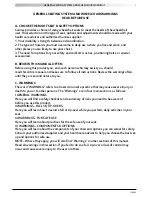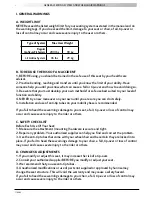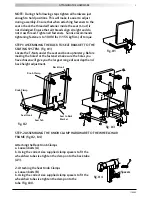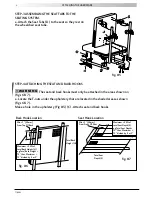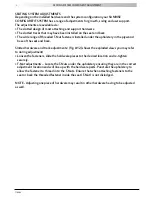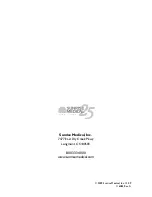
6
116083
GENERAL SEATING SYSTEM AND WHEELCHAIR WARNINGS
e. Never allow the presence of a second occupant climbing or standing on a
component of the chair.
If you fail to heed these warnings damage to your chair, a fall, tip-over or loss of control may
occur and cause severe injury to the rider or others.
B. REACHING OR LEANING
If you reach or lean it will affect the center of balance of your chair. This may
cause you to fall or tip over. When in doubt, ask for help or use a device to
extend your reach.
1. NEVER reach or lean if you must shift your weight sideways or rise up off the seat.
2. NEVER reach or lean if you must move forward in your seat to do so. Always keep
your buttocks in contact with the backrest.
3. NEVER reach with both hands (you may not be able to catch yourself to prevent a fall
if the chair tips).
4. NEVER reach or lean to the rear unless your chair has anti-tip tubes locked in place.
5. DO NOT reach or lean over the top of the seat back. This may damage one or both
backrest tubes and cause you to fall.
C. TRANSFER
It is dangerous to transfer on your own. It requires good balance and agility. Be
aware that there is a point during every transfer when the wheelchair seat is not
below you. To Avoid A Fall:
1. Work with your health care advisor to learn safe methods.
a. Learn how to position your body and how to support yourself during a transfer.
b. Have someone help you until you know how to do a safe transfer on your own.
2. Lock the rear wheels before you transfer. This keeps the rear wheels from rolling.
NOTE– This will NOT keep your chair from sliding away from you or tipping.
3. Make sure to keep pneumatic tires properly inflated. Low tire pressure may allow the rear
wheel locks to slip.
4. Move your chair as close as you can to the seat you are transferring to. If possible, use a
transfer board.
5. Rotate the front casters until they are as far forward as possible.
6. If you can, remove or swing footrests out of the way.
a. Make sure your feet do not catch in the space between the footrests.
b. Avoid putting weight on the footrests as this may cause the chair to tip.
7. Make sure armrests are out of the way and do not interfere.
8. Transfer as far back onto the seat surface as you can. This will reduce the risk that
the chair will tip or move away from you.
If you fail to heed these warnings damage to your chair, a fall, tip-over or loss of control may
occur and cause severe injury to the rider or others.




